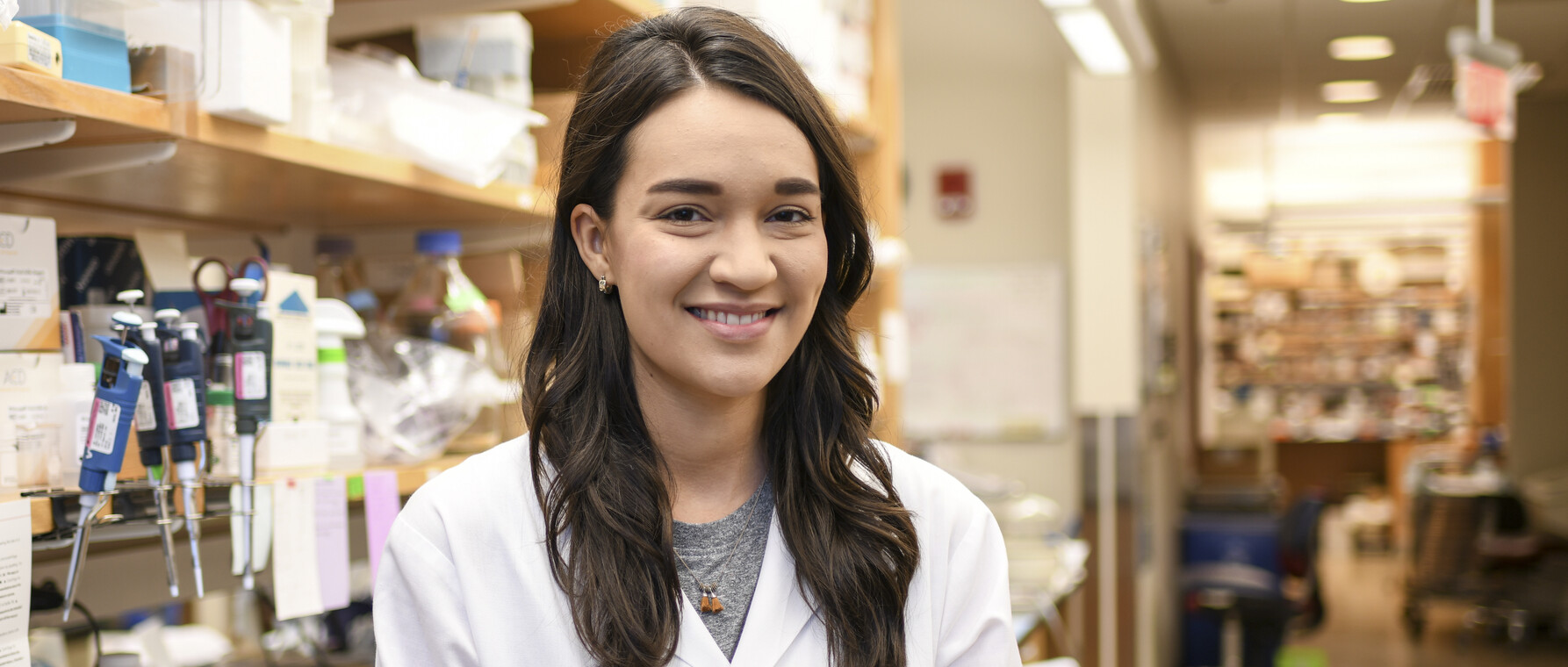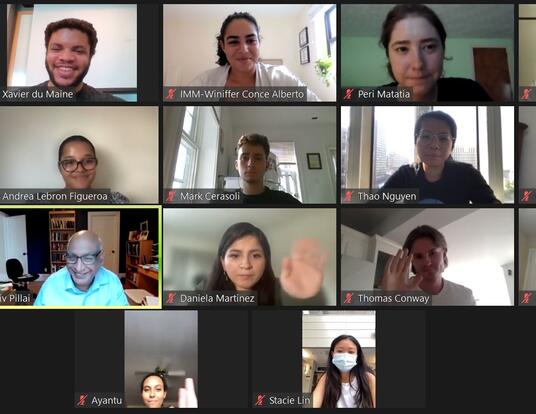In her psychology classes at Lewis & Clark College, Krissy Lyon often found herself asking how things in the brain worked. “You’re told, ‘the prefrontal lobe controls executive functions,’ but I wanted to know how,” Lyon explains. Though she discovered answers to many of her questions, others were left unresolved. As a PhD candidate in neuroscience in the Division of Medical Sciences, Lyon now works to find answers to her questions about serotonin-producing neurons.
If it is possible to fall in love with a type of neuron, then Lyon is in love with Drd2-Pet1 neurons. “It’s a bit of a mouthful,” she confesses. This neuron is particularly fascinating for Lyon because it produces serotonin while expressing a receptor for dopamine, another neurotransmitter. “It’s releasing serotonin, but responding to dopamine,” explains Lyon.
Neurotransmitters are chemicals that allow messages to travel between neurons and other cells, such as muscle cells, fat cells, and other neurons. Both serotonin and dopamine are incredibly important neurotransmitters. They are known for their roles in regulating mood and depression, but serotonin also has an effect on a number of other functions, such as attention, sleep, and respiration.
Drd2-Pet1 neurons also help regulate aggression, and Lyon’s research focuses in part on determining the way in which dopamine receptors affect this function. “I’ve been selectively knocking out the dopamine receptor in serotonin neurons and seeing how this changes behavior.”
Lyon conducts her research in the lab of Dr. Susan Dymecki, who first discovered the role that Drd2 plays in aggression. The Dymecki Lab is based in the Department of Genetics, and this interdisciplinary environment has enriched Lyon’s graduate career. “I have both avenues open to me,” Lyon says. “I can go talk to neuroscientists about the physiology of neurons, but then discuss what type of splice isoforms of Drd2 exist in serotonin neurons with geneticists.”
As a fifth-year graduate student, Lyon is thinking about her next steps and generating new research questions to explore as a postdoctoral candidate. With Dymecki’s encouragement, Lyon applied for and received a postdoctoral fellowship from the National Institute of Health this year, which funds two years of graduate school and four years of postdoctoral research. “This fellowship gives me more options for a postdoc,” says Lyon, enabling her to choose her next lab based entirely on its research as opposed to its funding opportunities. Will she keep asking questions about Drd2-Pet1 neurons as a postdoc? Lyon first wants to try something different, but she’s not closing the door on serotonin entirely. “Serotonin is involved in so many functions that I’m sure I’ll come back to it.”
Photos by Molly Akin







